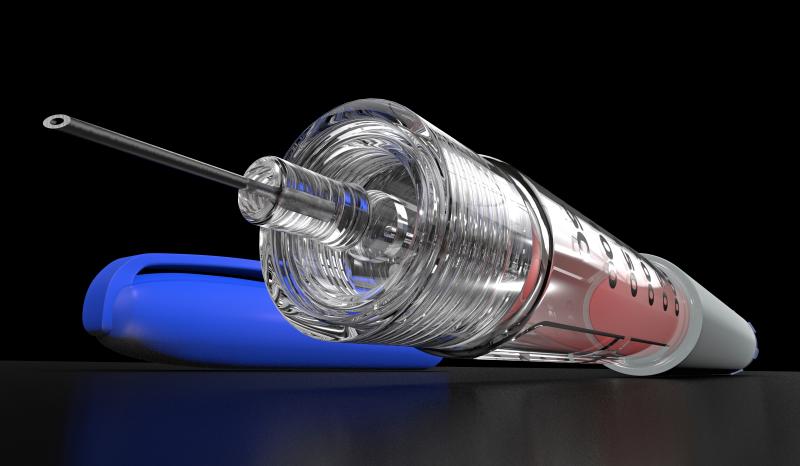
Shifting from twice-daily to once-weekly extended-release exenatide may help improve diabetes management, a recent study has found.
Fifty-eight Japanese type 2 diabetes patients (mean age, 55±12 years; 53 males) were enrolled. Participants had been on twice-daily exenatide for at least 3 months before they were switched to once-weekly extended-release exenatide for 24 weeks. The primary endpoint was the change in glycated haemoglobin (HbA1c) after the trial.
Twenty-four weeks after switching medications, HbA1c concentrations dropped by 0.2 percent (7.2±1.2 percent vs 7.0±1.2 percent, 95 percent CI, –0.4 to –0.03). Extended-release exenatide thus proved to be significantly noninferior (p<0.005) and superior (p=0.01).
This comparative advantage extended to other glycaemic parameters, such as fasting plasma glucose (154±46 vs 142±46 mg/dL; p=0.02) and overall preprandial and postprandial glucose levels. The proportion of patients achieving HbA1c <7 percent, serum C-peptide concentrations, body weight and fasting plasma insulin levels remained comparable between the two regimens.
The incidence of hypoglycaemia significantly dropped after 24 weeks, and patient satisfaction with the investigational medication was significantly better.
These improvements came at no additional safety concerns. No serious adverse events related to the study drug were reported, and no cases of acute pancreatitis and other gastrointestinal symptoms occurred.
“These findings will be useful for selecting optimal treatment for individuals with type 2 diabetes,” said researchers.